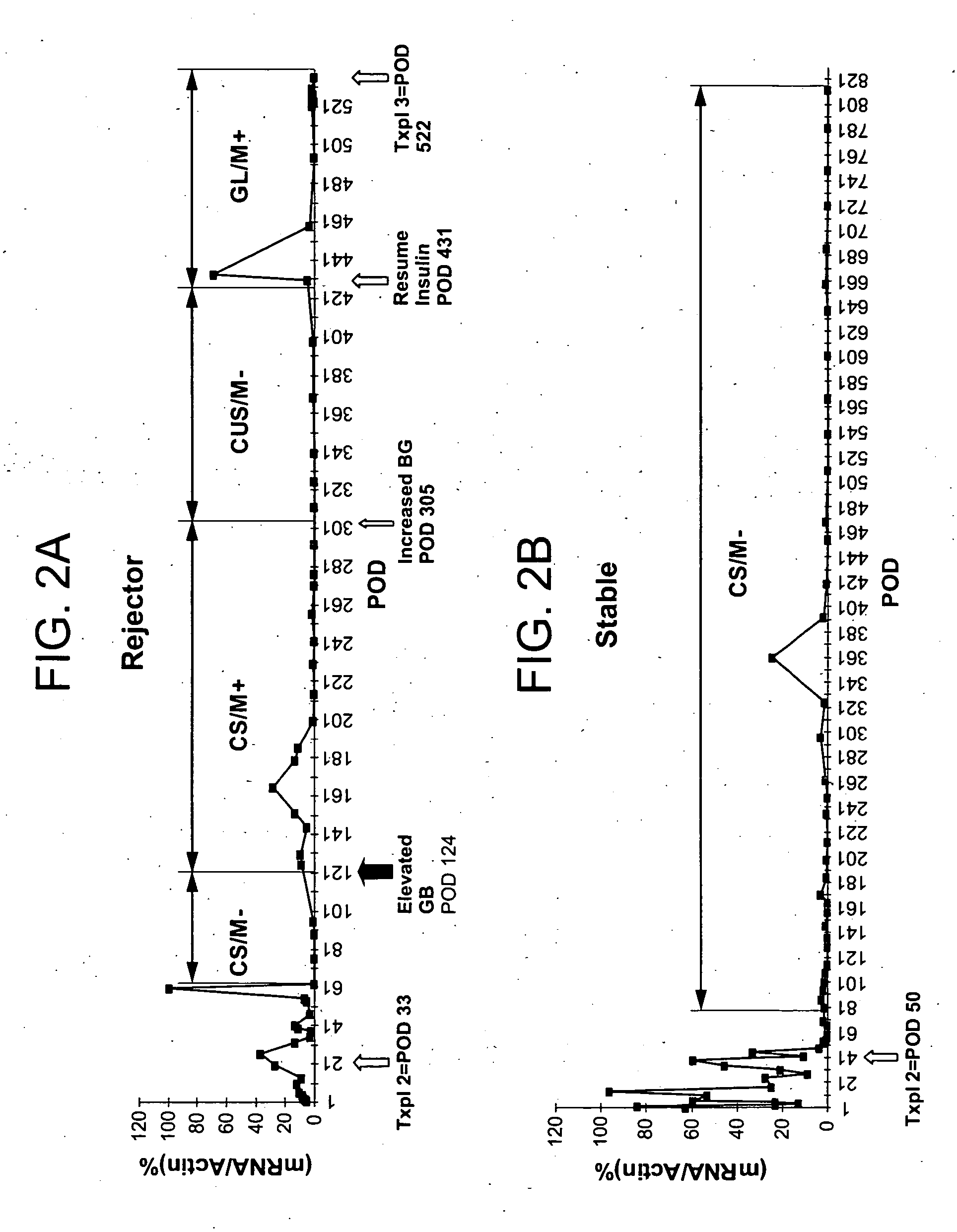Molecular dissection of cellular responses to alloantigen or autoantigen in graft rejection and autoimmune disease
a graft rejection and autoantigen technology, applied in the field of early detection of antigenspecific tcell responses, can solve the problems of conflicting reports, lack of consistency in rejecting vs. clinically stable patients or in patients, and relevance of measurements
- Summary
- Abstract
- Description
- Claims
- Application Information
AI Technical Summary
Benefits of technology
Problems solved by technology
Method used
Image
Examples
examples
[0043] Prior to transplantation, there was no statistically significant difference in WBC between patients who would eventually experience islet rejection and those who retain stable graft function (FIG. 1). Granzyme B (GB) expression was quantitated by real-time polymerase chain reaction (RT-PCR) as described by Han et al. (Diabetes 53:2281-2290, 2004). Flow cytometry was undertaken by addition of 4-color cocktails of monoclonal antibodies, specific for particular human cluster differentiation (CD) antigens, to whole blood followed by a 15 min incubation and processing with a Beckman-Coulter Q-Prep. Analysis was done with an EPICS XL flow cytometer. No statistically significant difference in immunophenotype was observed. Prior to initiation of immune suppression and transplantation, the only statistically significant difference found between patients who would eventually experience islet rejection and those who retain stable graft function was for granzyme B alone. This difference ...
PUM
| Property | Measurement | Unit |
|---|---|---|
| Time | aaaaa | aaaaa |
| Volume | aaaaa | aaaaa |
| Time | aaaaa | aaaaa |
Abstract
Description
Claims
Application Information
 Login to View More
Login to View More - R&D
- Intellectual Property
- Life Sciences
- Materials
- Tech Scout
- Unparalleled Data Quality
- Higher Quality Content
- 60% Fewer Hallucinations
Browse by: Latest US Patents, China's latest patents, Technical Efficacy Thesaurus, Application Domain, Technology Topic, Popular Technical Reports.
© 2025 PatSnap. All rights reserved.Legal|Privacy policy|Modern Slavery Act Transparency Statement|Sitemap|About US| Contact US: help@patsnap.com



